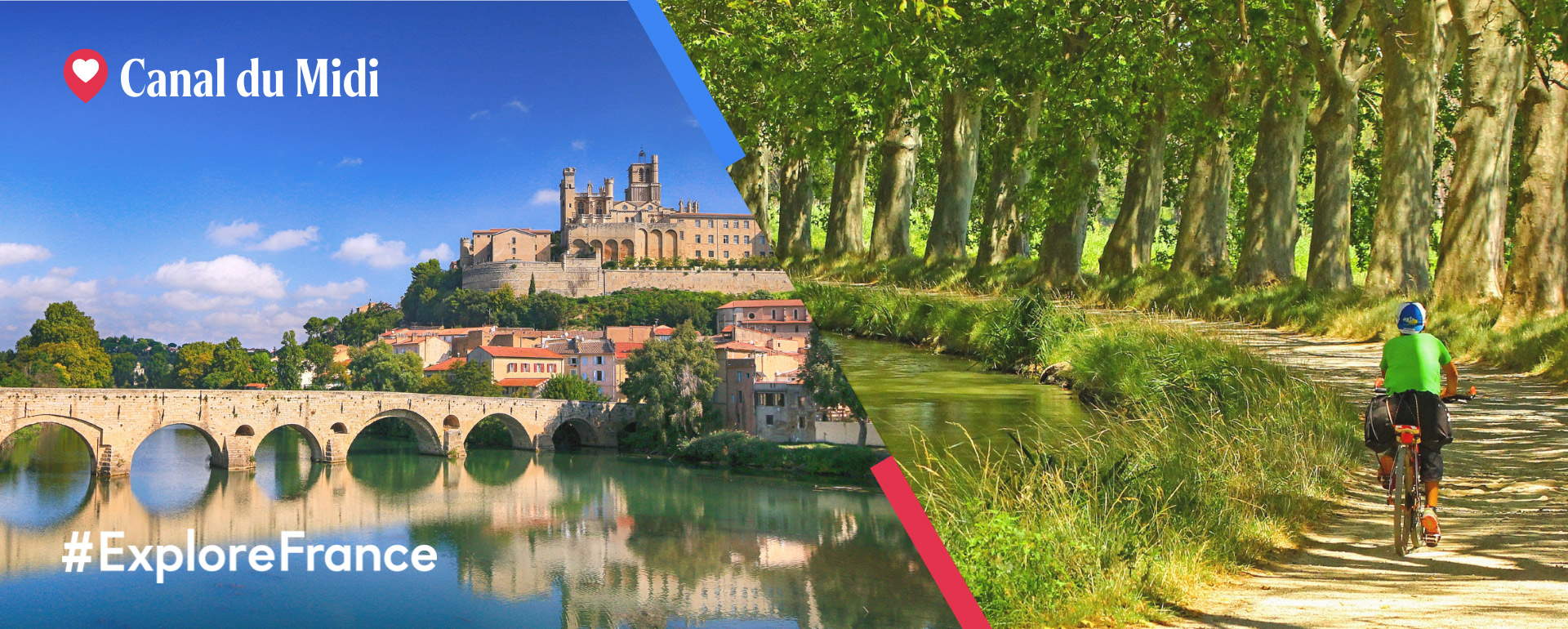
Experience the Canal du Midi in all its forms: it's a historical landmark listed as UNESCO world heritage, royal channel for river tourism in Europe AND an iconic holiday destination in Occitanie! This one-of-a-kind feat of engineering runs from Toulouse to Sète with a cocktail of fabulous voyages, pretty towns, bike rides, boat trips, "guinguettes" (open-air cafés), Mediterranean scenery and vibrant events to soak up Occitalité when summer arrives.
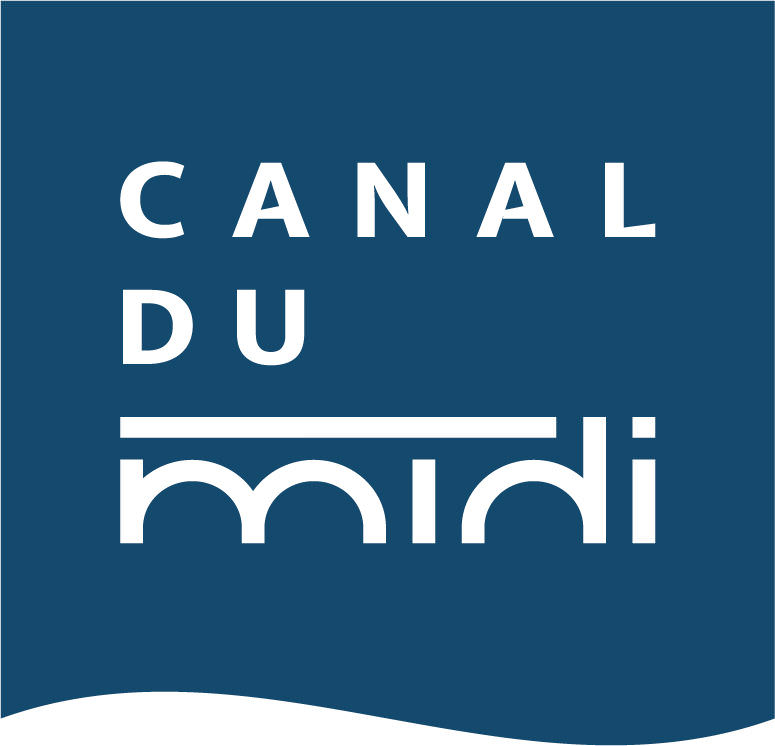
By the sea, in the mountains, in the countryside, or in the city, set off in slow mode on the Fabuleux Voyages route. Meet those who live there and shape this region where the sense of hospitality and conviviality take on a very special dimension. With its exceptional cultural and natural wealth and abundant outdoor activities, the Occitanie Sud de France destination is a permanent invitation to travel.
Video 0:20mn Voyage Occitanie
World Heritage Site UNESCO
The Canal du Midi was created in the 17th century by Pierre-Paul Riquet. This unique work of art in the world was listed as a World Heritage Site by UNESCO in 1996, becoming a privileged destination for river tourism in Europe.
The Canal du Midi, both a technical feat and a work of art, spans the ages and landscapes while preserving their authenticity and diversity. Away from the hustle and bustle, the timeless Canal du Midi is a 241km channel beneath the shade peppered with lock houses, classic Southern French houses, guinguettes and spectacular feats of engineering such as the Malpas tunnel and famous Fonséranes 9 Locks in Béziers.
The supply system of the Canal du Midi also testifies to the remarkable ingenuity of Riquet. The system originates in the Montagne Noire (Tarn), captures the streams and collects them in the Saint-Ferréol basin near Revel. From there, the water is carried by channels to the canal 20 KM from Saint-Ferréol!
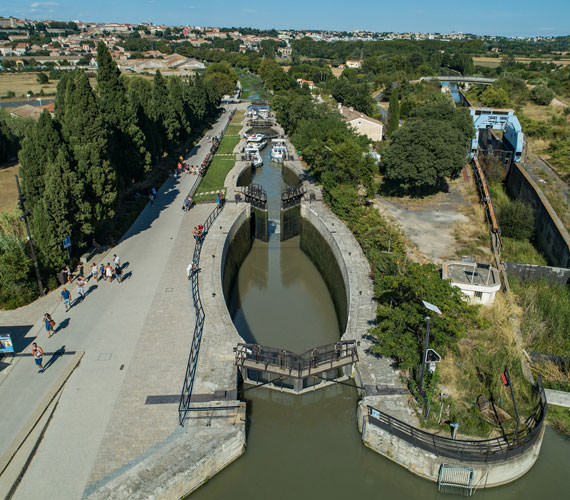
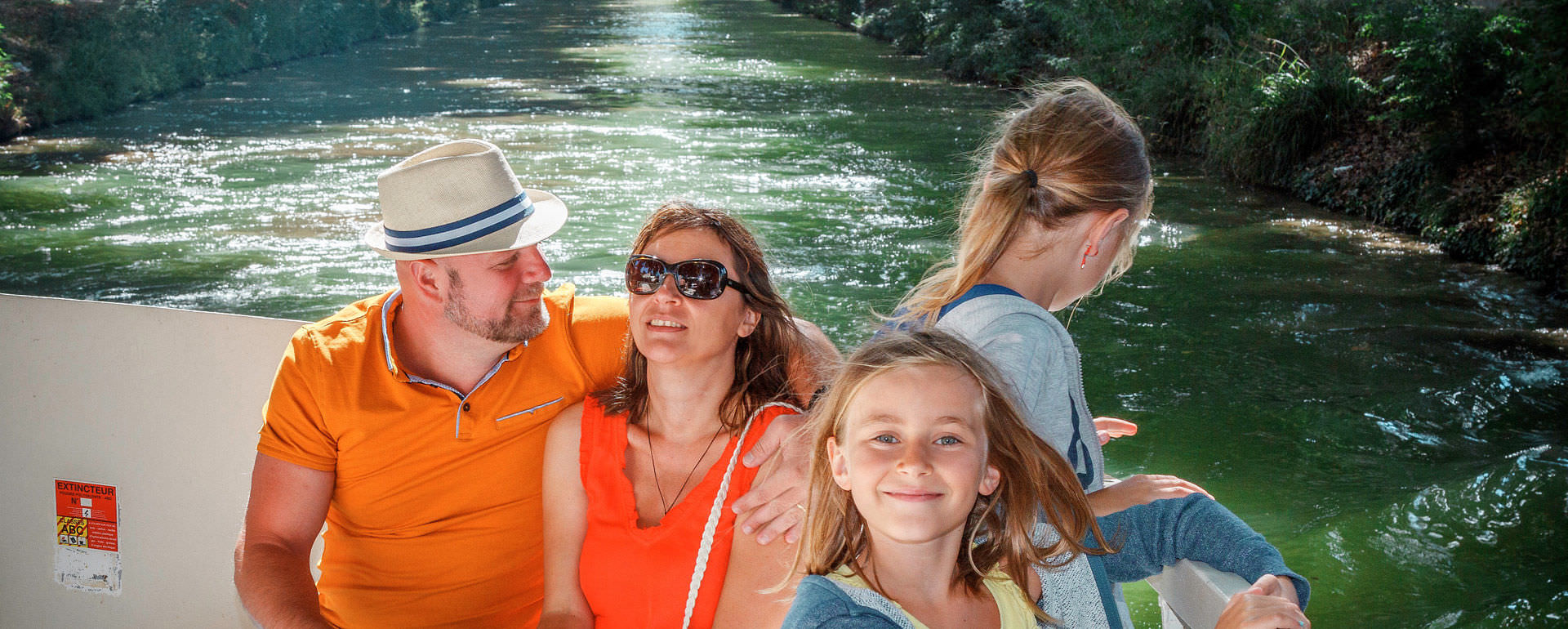
Let yourself be guided on the Canal du Midi, sightseeing boats and barges take you on a cruise of 1h30 to 2h or for a day, departing from Sète, Béziers, Carcassonne, Castelnaudary, Toulouse.
From Toulouse to Sète via Carcassonne, the towns crossed by the Canal du Midi are all Grands Sites Occitanie. To discover absolutely!
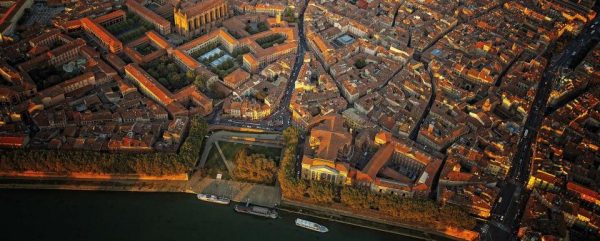
Toulouse
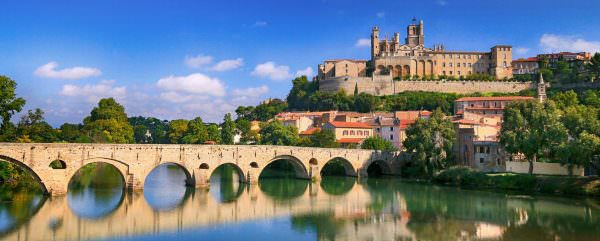
Béziers
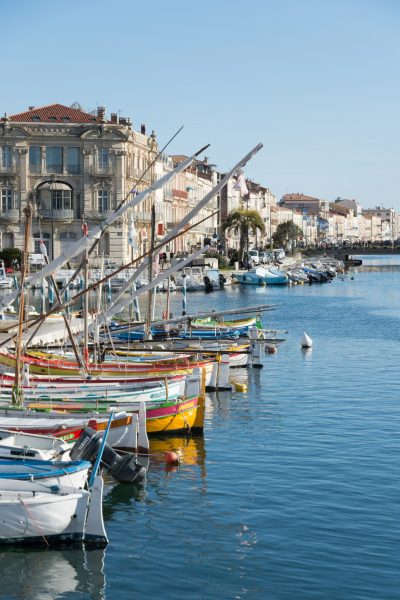
Sète
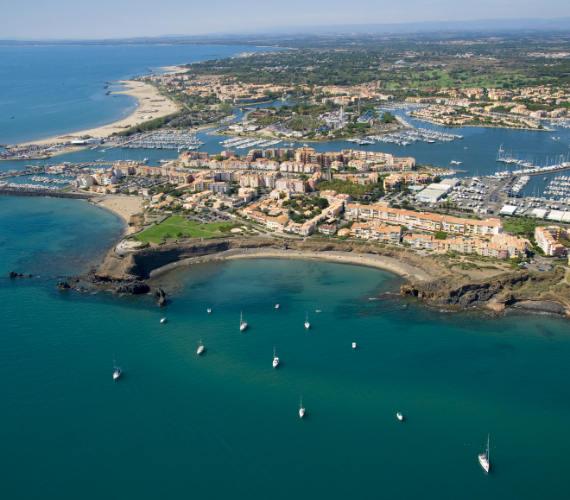
Agde
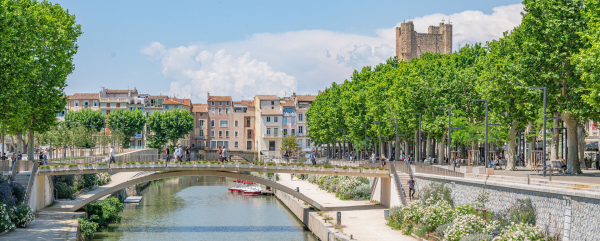
Narbonne
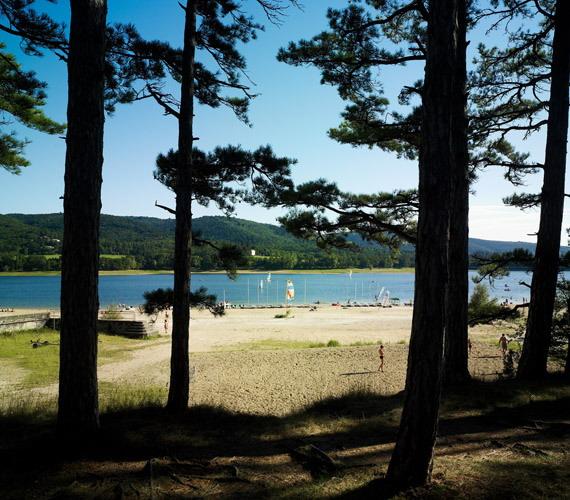
At the sources of the Canal du Midi
Lac de Saint-Ferréol
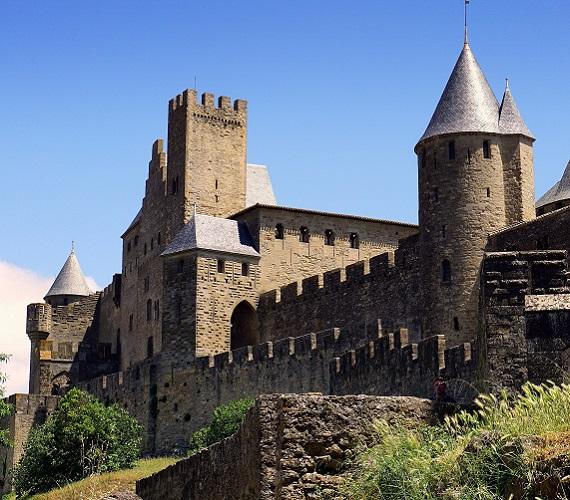
Carcassonne and hilltop citadels
Carcassonne
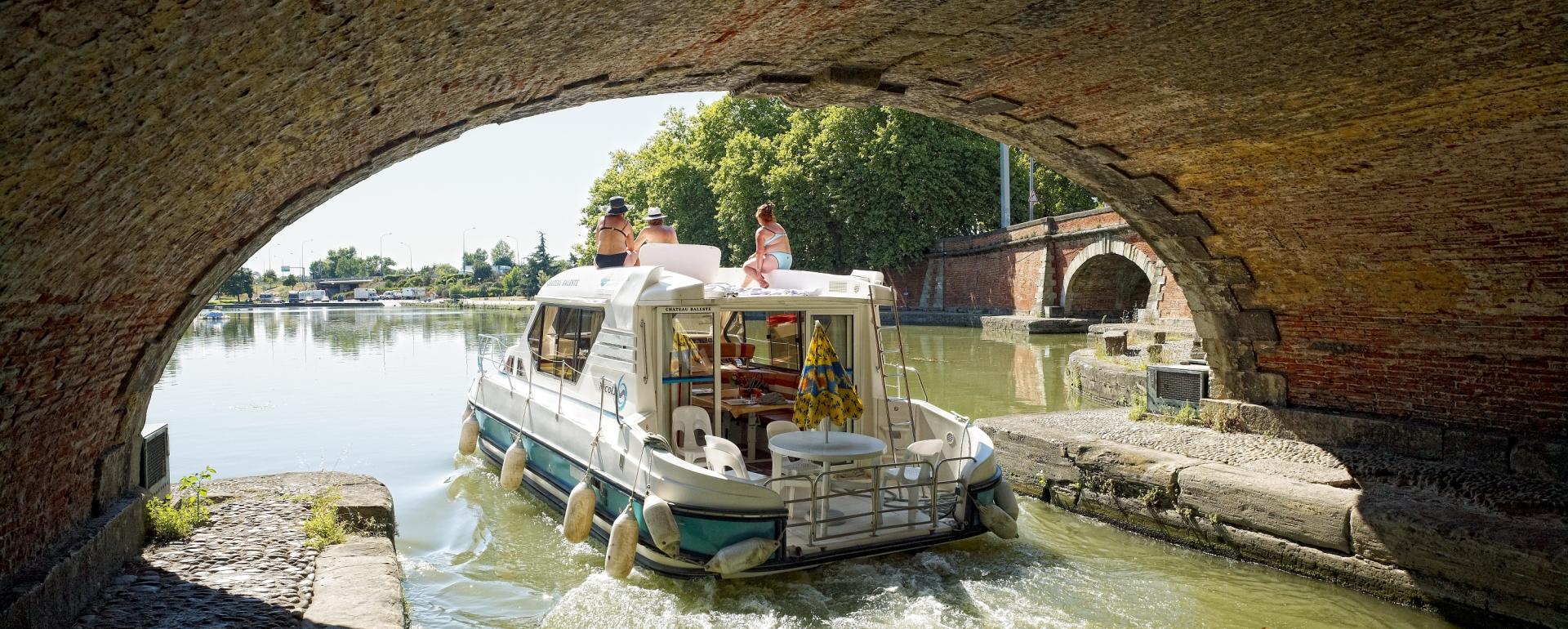
A cruise on the Canal du Midi, taking you through the countryside from Port-Lauragais, leads you to the pink city of Toulouse where passionate locals will be your guides on walking or e-bike tours. Follow their advice, listen to their anecdotes and you'll know everything there is to know about the history, food, drink and secret side to a city famous for its lifestyle.

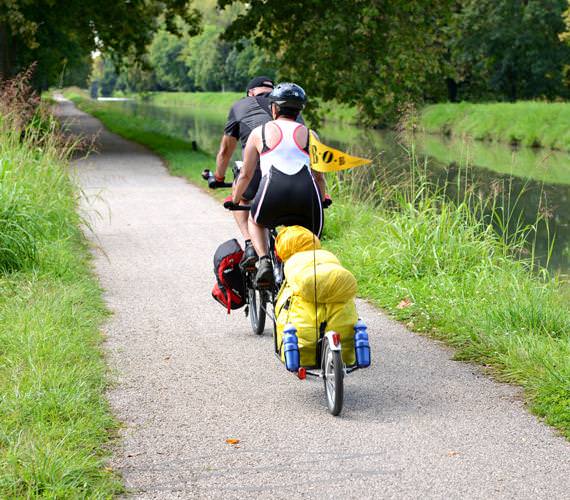
The Canal du Midi was extended from Toulouse with the Canal de Garonne, built between 1836 and 1856. The two canals cover a total of 360km waterways to form the Canal des Deux Mers: cycle along the towpath on an epic adventure between the Atlantic and Mediterranean (V80 route). Your Occitanie pitstops: Moissac, Montech, Toulouse, Le Seuil de Naurouze, Castelnaudary, Carcassonne, Le Somail, Béziers, Agde, Sète.

How to get there?
FIND OUT MORE